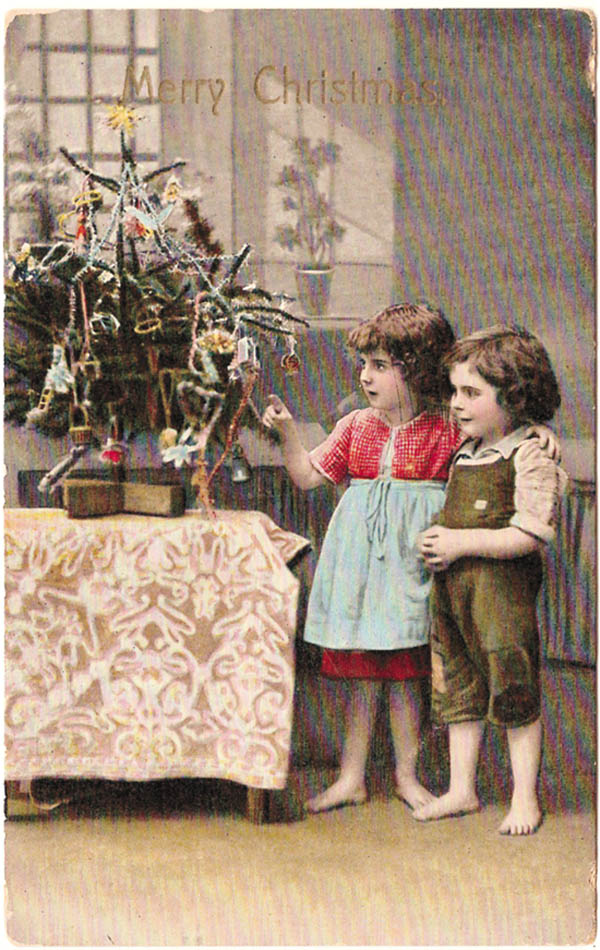THE POSTCARD SCENE
A Green Christmas On Postcards
There are all kinds of legends about why the evergreen tree and its branches are an enduring symbol for Christmas. For one thing, the frigid winter weather in Europe limited the natural foliage available in December. Because spruce, pine and fir remained green when every other tree lost its leaves, the evergreens became a symbol of life in early days.
Primitive man could never be absolutely certain that warm weather would return, but the evergreen gave hope. Scientists can now find traces of branches hauled into caves to use as a buffer against a cold floor, but no one can be sure when they were first used as decorations or objects of veneration.
History records that ancient Romans brought greenery into their homes, and pagan traditions from Europe include the burning of a Yule log and the use of mistletoe. When Christianity became the dominant religion in the Western world, a whole new set of legends grew up around familiar trees, plants and flowers.
Holly with its blood-red berries came to symbolize the crucifixion of Christ. The Star of Bethlehem was named because it resembled the star that guided the Wise Men. The Glastonbury Thorn, which blossoms around Christmas, was attributed to Joseph of Armithea who thrust his wooden staff into the ground, only to have it blossom.
The Rose of Jericho was believed to have flowered at the birth of Jesus, then closed at the time of the crucifixion and blossomed again at Easter. In Sicily, children used to put pennyroyal in their beds on Christmas Eve, believing that it blossomed at the exact moment Jesus was born. (These legends come from my all-time favorite holiday book, Telling Tommy About Days We Celebrate by Paul Pim, Cupples and Leon Co., 1941. Nothing on Google beats it.)
The Christmas tree comes with its own history and legends. Martin Luther is often credited with first bringing a small tree inside at Christmas time and putting candles on it to duplicate stars he saw through evergreen branches. In England Prince Albert, the German consort of Queen Victoria, allegedly brought the first Christmas tree to Britain in 1841. History seems to show that Queen Charlotte, German wife of George III (of Revolutionary War fame) did it first.
Whatever the legends or fact, the tradition of the Christmas tree did come to this country with German and English immigrants. By the time postcards became wildly popular in the early 1900s the evergreen was the dominant symbol of the holiday.
One way to collect Christmas trees on postcards is to look for real photos. Since indoor home photography was in its infancy during the Golden Age of greeting postcards, this can be a challenge. Commercial publishers filled the gap, and its fun to see the decorations used a hundred years ago.
Its also interesting to see who was supposed to bring trees into a home. German tradition was that parents put up the tree after the children went to sleep on Christmas Eve. Postcard makers were more imaginative, picturing Santa and angels delivering the traditional evergreen.
For those who love to track down the origins of Christmas customs, postcards are a rich source. Mistletoe, wreaths, and logs are out there to find. Trees, with or without decorations, are readily available. Just as evergreens make homes more festive, theyve put their stamp on a huge number of lovely old Christmas postcards.











